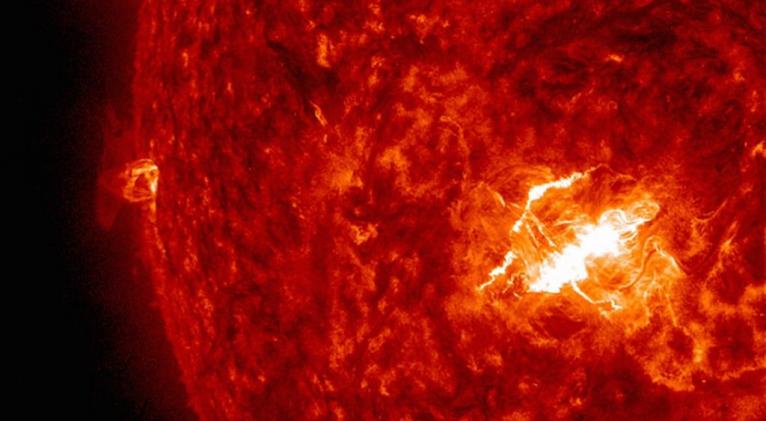Rare 'severe' geomagnetic storm is hitting Earth right now

The event, which is just one notch below the highest category of solar storm, began at about 10 a.m. ET on Tuesday, according to the NOAA's Space Weather Prediction Center. The geomagnetic storm is the result of a pair of coronal mass ejections, or CMEs, that left the Sun on March 15 and are now interacting with Earth's atmosphere and geomagnetic field.
In a press briefing on Tuesday, NOAA scientists said the two CMEs may have unexpectedly combined as they sped toward Earth, which could explain why the geomagnetic storm has been so strong.
Coronal mass ejections, which are essentially magnetic clouds ejected at high velocity from the sun, can affect the electricity grid, radio transmissions and GPS signals, among other things, when they interact with the planet's magnetic field. According to NOAA, there had not been any reported abnormalities in the U.S. power grid as of noon eastern time on Tuesday.
However, there have been numerous reports of "vivid" sightings of the Northern Lights across the northern tier of the U.S., including Washington State and Minnesota. The G4 solar storm is expected to lead to a widespread viewing of the Aurora Borealis, or Northern Lights, on Tuesday night from Alaska across Canada and much of Eurasia.
It's possible that the Northern Lights will be visible as far south as Tennessee, New Mexico and Oklahoma on Tuesday night, NOAA experts said, depending on the evolution of the event's intensity.

Image: NOAA
The Space Weather Prediction Center issued a G1, or minor, geomagnetic storm watch for Wednesday in response to the two recent CMEs, with the first effects to be felt on Tuesday. Scientists think the two CMEs unexpectedly combined into “one sort of larger shock front traveling and intersecting Earth’s orbit,” according to Robert Rutledge of the Space Weather Prediction Center.
The CMEs in this case were not oriented head-on in relation to Earth, causing forecasters to think the planet would just receive "just a glancing blow," rather than a severe geomagnetic storm, Rutledge says.
Severe solar storms such as this one have the potential to cause "possible widespread voltage control problems" in the electrical grid. It could also disrupt tracking of spacecraft, and impede the efficacy of high-frequency radio signals, such as those used by flights that travel across the Arctic between North America and Asia. These storms can also degrade the accuracy of satellite navigation.
According to the Space Weather Prediction Center, these storms tend to occur about 100 times per every 11-year solar cycle, or about 60 days per each 11-year cycle. According to the Space Weather Prediction Center, the ongoing event is one of just two G4 events in the current solar cycle.

Image: Marketa Murray/Spaceweather.com
This event is nowhere near the strength that would be required to create a nightmare scenario that space weather specialists have been warning about for years. In that scenario, a powerful geomagnetic storm, a G5 on the five-point scale, shuts down the electrical grid, wreaks havoc on radio communications, GPS devices and aerial navigation systems, costing billions in damage.
Such a storm last occurred in 1859, and is known as The Carrington Event. In that event, a CME was so powerful that it raced from the Sun to the Earth — a 90-million-mile journey — in just 18 hours.
Research published in 2014 showed that the Earth narrowly missed a similar event in 2012, but the burst of solar energy was directed far enough away from Earth's magnetic field that disaster was averted.
The ongoing event may last a total of 24 to 36 hours, NOAA scientists told reporters on Tuesday. The last G5 event occurred in 2005, and the last G4 event before this one was in the fall of 2013, according to NOAA.
While this event is somewhat rare in the context of the current solar cycle, when looking at longer timescales it does not appear nearly as unusual, Rutledge says.













Add new comment